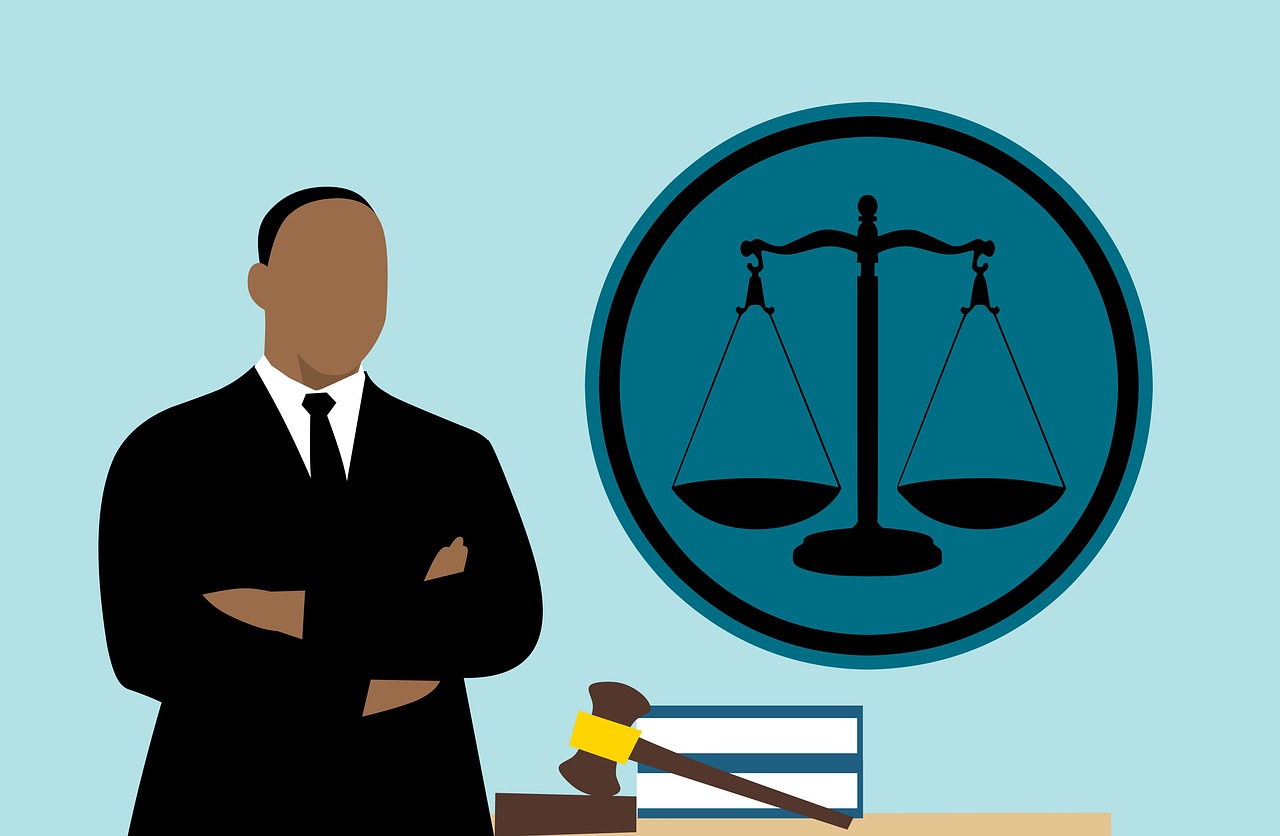Lifestyle
What “Reasonable Person” Standard Is Applicable When Determining Negligence?

In order to determine negligence, the reasonable person test asks if a person’s actions are consistent with what would be anticipated of a generally careful and sensible person in the same situation. Stated otherwise, did the accused act in a way that would have been expected of a reasonable person?
In Florida, determining who is legally liable for an accident depends critically on the issue of carelessness. The “reasonable person standard” is the foundation of this assessment. Your personal injury lawyer can explain the “reasonable person standard” and how it can apply to your case if you are hurt in an accident in Florida.
The Reasonable Person Standard: What Is It?
Legally speaking, the reasonable person standard offers a yardstick by which someone’s actions are assessed in cases of negligence. “How would a reasonable person have acted under the same circumstances?” is the central question it poses. Jurors and judges are asked this question in order to assist them in determining whether a person’s acts (or inactions) fall short of the expected standard of care that a reasonably prudent person would follow.
Like in many other jurisdictions, Florida does not base its reasonable person criterion on what an especially cautious or risk-averse person would do. Rather, it represents the behaviors of a composite of what the community expects of each individual. A reasonable individual would, for example, observe traffic laws when driving, heed warning signs, and refrain from needlessly endangering other people.
Utilizing the Reasonable Person Standard to Determine Negligence
The activities of the parties involved in a personal injury lawsuit are rigorously examined in light of this reasonable person standard. If it is determined that an individual’s actions do not correspond with what a reasonable person would have done in the same situation, negligence has been proven.
According to the law, proof of someone’s negligence is insufficient; strong, convincing evidence is required. Your personal injury lawyer is essential to this procedure because they have to painstakingly gather evidence showing how the negligent party strayed from what a reasonable person would have done. Piecing together facts, testimony, and any footage or recordings that can definitively demonstrate that their activities were in violation of the recognized norms of safety and care is more important than simply focusing on what they did or did not do.
This proof could take the form of eyewitness statements that refute the version of events provided by the person at fault or security footage that captures the moment of negligence. Something as small as skipping a scheduled maintenance or ignoring a warning alert might have a big impact. Your personal injury attorney seeks to establish beyond a shadow of a doubt that the defendant’s acts were not just improper but directly caused others to be put in danger by providing a thorough picture of their negligence.
How Does This Impact Your Case for Personal Injury?
In a personal injury case, knowing the reasonable person standard is essential. In the event of an accident, this standard might assist you in proving liability if you think the other person was careless.
You should be aware that your activities will be evaluated in comparison to the hypothetical reasonable person’s behavior in situations where you might be held culpable. It doesn’t matter what you meant or thought was appropriate; what matters is what the community would anticipate from someone in your situation.
Although navigating the complexities of the reasonable person standard might be challenging, Florida’s negligence law heavily relies on this standard. A fair appraisal of the facts is essential when seeking justice following an injury accident, and comprehending this criterion is crucial.
Lifestyle
How Magic Moment Resort Became the Pioneer of a New Era: The First-Ever Dazzler Select by Wyndham

In Central Florida’s packed landscape of family hotels and theme park lodgings, a unique kind of property has emerged. Magic Moment Resort & Kids Club in Orlando is earning attention from traveling families for a simple reason. It delivers joy, warmth, and convenience at a smart value that keeps Disney dreams accessible rather than overwhelming.
By joining Wyndham, Magic Moment Resort unlocks the strength of a global powerhouse, gaining worldwide visibility, advanced technology, and access to Wyndham Rewards, the largest hotel loyalty program on the planet. This strategic move expands its reach, builds guest trust, and amplifies its impact, all while preserving the unique identity that sets it apart.
Just a short drive from the gates of Walt Disney World, the resort sits along the palm-framed stretch of West Irlo Bronson Memorial Highway. The location has long been known for its tourism bustle, yet Magic Moment has carved out a softer identity. It feels playful and colorful, but also intentional. It is designed by a family for other families, and that perspective shapes every experience on the property.
A Philosophy Rooted in Family Connection
Magic Moment Resort was built with a belief often forgotten in today’s tourism industry. Family vacations should feel uplifting instead of stressful, and affordability should not come at the expense of comfort or creativity.
Check-in feels more personal than transactional. Parents arrive with strollers, snacks, and tired children. The staff seems to understand this rhythm instinctively. The energy is warm, the pace is easy, and the tone is set long before anyone even enters the room.
Unlike competing hotels that charge a steep premium for proximity to the parks, Magic Moment focuses on smart value without compromise. Its pricing strategy is refreshingly straightforward. Families can stay five minutes from Disney without draining their travel budgets. For many guests, that difference helps shift resources from hotel costs to experiences. It means more character breakfasts, more souvenirs, and more freedom to enjoy the parks without financial tension following every decision.
Spaces Designed for Children and Considerate of Parents
Magic Moment is filled with color, but nothing feels overstimulating. Instead, the resort offers a sense of wonder scaled to a child’s imagination.
The themed family rooms are a highlight. Children step into rooms that feel lighthearted and whimsical, yet parents appreciate that they are also functional and comfortable. It is the atmosphere of a themed suite without the theme park price.
Its Kids Club and Teens Club reflect that same thoughtful balance. These spaces invite exploration and creativity for children and provide a nurturing level of supervision. Parents can enjoy an hour by the heated pool, relax in a shaded cabana, or simply take a quiet moment while knowing their children are safe and engaged.
The resort’s grounds encourage slow mornings and gentle afternoons.There’s a 30,000 sqf outdoor playground as well as peaceful corners for parents. Importantly, families are not asked to pay additional fees to enjoy them. Magic Moment’s amenities feel generous rather than transactional.
Unforgettable Days at the Parks
For families navigating a Disney vacation, convenience is often the true luxury. Magic Moment delivers this with a complimentary delicious hot breakfast that encourages everyone to sit and enjoy the start of the day rather than rush through it.
Transportation to the parks is included, which removes one of the most common stress points for visiting families. There is no parking lot maze and no long lines at the toll booths. Guests simply board the shuttle and begin their day with ease.
When the sun sets and everyone returns from a day of rides and parades, the resort becomes a place to unwind. Children head straight for the pool. Parents sip Starbucks coffee. The atmosphere is relaxed and bright, and the resort feels like an extension of the Disney experience rather than a pause from it.
A Value That Resonates with Families
What truly elevates Magic Moment is the balance it achieves between smart value and experience. The resort has cultivated a loyal following because guests feel they receive more than they pay for. More thoughtful design. More space for connection. More comfort without excess.
Affordability here does not signal minimalism. Instead, it allows families to breathe. It creates space for shared moments that are often overlooked in the rush of theme-park vacations. Children play freely. Parents unwind without guilt. Families spend more time together and less time navigating logistics.
A Resort Built with Heart
Magic Moment Resort & Kids Club stands out in a region overflowing with hospitality options. Its charm is not rooted in extravagance. It is grounded in sincerity. It reflects the belief that family travel should feel joyful, accessible, and full of color.
For families planning a Disney visit, it represents more than a place to sleep. It is a retreat where memories can form in the quiet moments as much as in the thrilling ones.
At Magic Moment, the greatest luxury is not an amenity. It is the feeling of being exactly where you are meant to be, together.
-

 Tech5 years ago
Tech5 years agoEffuel Reviews (2021) – Effuel ECO OBD2 Saves Fuel, and Reduce Gas Cost? Effuel Customer Reviews
-

 Tech6 years ago
Tech6 years agoBosch Power Tools India Launches ‘Cordless Matlab Bosch’ Campaign to Demonstrate the Power of Cordless
-

 Lifestyle6 years ago
Lifestyle6 years agoCatholic Cases App brings Church’s Moral Teachings to Androids and iPhones
-

 Lifestyle5 years ago
Lifestyle5 years agoEast Side Hype x Billionaire Boys Club. Hottest New Streetwear Releases in Utah.
-

 Tech7 years ago
Tech7 years agoCloud Buyers & Investors to Profit in the Future
-

 Lifestyle5 years ago
Lifestyle5 years agoThe Midas of Cosmetic Dermatology: Dr. Simon Ourian
-

 Health7 years ago
Health7 years agoCBDistillery Review: Is it a scam?
-

 Entertainment6 years ago
Entertainment6 years agoAvengers Endgame now Available on 123Movies for Download & Streaming for Free
